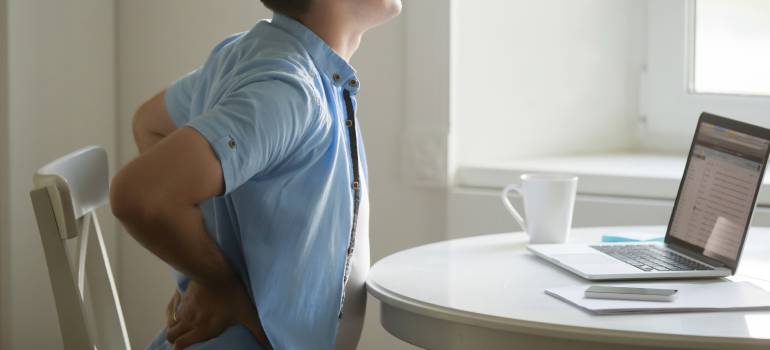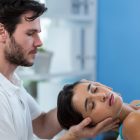Overview of neck: Neck comprised 7 bones and are called cervical vertebrae. Th ese vertebrae are joined together through facet joints which along with muscles facilitates the movement of the head. Between each vertebra there are discs. Discs are jelly like structures.Nerve roots extend out from the spinal cord at each disc level. Nerves are the pain carrying structure. These nerves carry impulses that deliver sensations to and fro from brain to other receptors.
Cervical Spondylosis:Osteoarthritis is one the common condition for neck pain. Neck arthritis is commonly called as cervical spondylosis or cervical osteoarthritis.In this condition, the joint develops degenerative changes that include bone, disc, and cartilage wear and tear. Due to wear and tear mechanism disc becomes thinner, facet joints become degenerated, spaces between the joints gets reduced. There is formation of bony spurs/osteophyte at the edge of the facet joints and vertebrae. This degeneration can progress to disc herniation and spinal cord compression. Cervical spondylosis is more common in the middle-aged and elderly population.
Causes of Cervical spondylosis:
- Overweight: More the weight, more early degeneration, more wear and tear mechanism.
- Previous history of injury to neck
- Failed neck surgery
- Poor Posture
- Severe Arthritic changes
- Osteoporosis
- Muscular weakness
- Genetic/ Hereditary
Symptoms of Cervical Spondylosis:
- Pain and stiffness are the early symptoms to be experienced by the patient
- Crepitus can be heard. Sounds like popping, clicking may be produced.
- Limited or restricted neck movements and thoracic mobility can also get compromised.
- Cervicogenic headache, nausea, vomiting, vertigo can be present
- Radiation (tingling/ numbness) in arms/hands if nerves are impinged.
- RED FLAG SIGNS: Red flag signs appears when there is spinal cord compression leading to CERVICAL MYELOPATHY.
- Symptoms of cervical myelopathy are loss of grip, rapid muscle weakness, bladder retention, loss of balance, swallowing difficulty, slurred speech, sensations and motor changes. It is an emergency condition and it is progressive so consultation with spine specialist is important.
TREATMENT:
Conservative management:
- Posture Correction: Weak muscles leads to poor posture and it is a vicious cycle so poor posture again leads to weak muscles. So, the treatment is posture correction along with strengthening. Let’s Discuss about posture management below:
- Sitting posture:

- Lying/Sleeping posture:

- Standing posture:

- Advance Physiotherapy Management:
- Spinal decompression:
Nonsurgical decompression is a motorized traction that may help relieve back /neck pain and their radiating symptoms. It works by gently stretching the spine, hence creating a negative pressure in the disc, resulting in taking pressure off from the nerves.
- Dry needling: Dry needling is a technique that has been used for reducing low back pain by releasing myofascial trigger points.
- Cupping Therapy: Cupping therapy is non- invasive technique which is very effective in releasing multiple trigger points, quickly and accurately.
- Kinesio taping: Taping can help relieve pain, inflammation, and spasms associated with nerve pain. Taping when applied can relax tensed muscles.
- Medex Treatment: Medex treatment is unique as it isolates core back/neck muscles and then strengthen them by placing actual loads under medical supervision. It resolves the back/neck pain from its roots thereby giving relief from pain and prevent recurrence.
Exercises
- Mckenzie Movement:

CHIN TUCKS/RETRACTIONS
- Neck Stretches:

Upper trapezius stretch:
Patient position: Sitting on chair
Procedure: Patient is asked to place one hand across the head and very slowly stretch the head towards same side, depress the opposite shoulder.
Repetition: 20 seconds hold, 2 repetitions.





